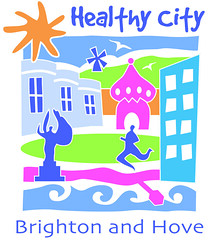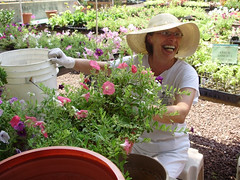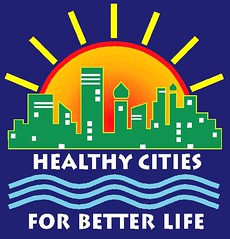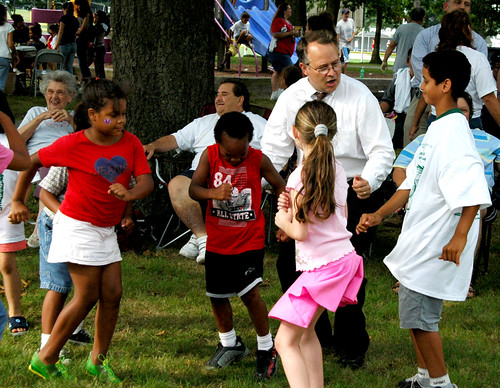Eight components of a "healing city"

Posted January 12, 2012 at 1:27PM
As director of NRDC’s sustainable communities work, I spend a lot of time defining (and refining) our goals: what is a sustainable community? We must know the destination in order to forge a path. But, in this case, that path can be as elusive as Hansel and Gretel’s.
In a room of twenty "experts," chances are you'll find a dozen different definitions. I’ve come to believe that there is no fixed definition of a sustainable community, though there are some good descriptions out there, mostly having to do with places that foster environmental, economic and social health in the present without compromising the future.
Forging or choosing a clear statement can be useful, especially for the pragmatic professionals who tend to populate my daily work environment. But, at the same time, trying to narrow the concept down can miss a lot, in my opinion. What is far more interesting, and perhaps more important, is the exploration of ideas relating to sustainability.
I n this vein, in 2010 I ran across the work of what is now called the Healing Cities Institute, “a non-profit society whose intention is to improve the physical, spiritual, social, and mental well-being of our communities.” I wrote about the group then, because it was beginning to raise some important issues relating to how the physical environment of a place can affect health and wellness - which, as I noted later in an article about societies and happiness, some places are finding ways to measure.
n this vein, in 2010 I ran across the work of what is now called the Healing Cities Institute, “a non-profit society whose intention is to improve the physical, spiritual, social, and mental well-being of our communities.” I wrote about the group then, because it was beginning to raise some important issues relating to how the physical environment of a place can affect health and wellness - which, as I noted later in an article about societies and happiness, some places are finding ways to measure.
Mark Holland, a former director of Vancouver’s sustainability office and a founder of the Healing Cities Institute, put it this way in an interview published in the Baltimore-based Urbanite:
“Ten years ago when we talked about creating sustainable cities, that was entirely a focus on environment. What has happened since, is that we began to see this tsunami of information coming forward in the connections between design and health. We realized we really needed to dig deeper into the human experience in cities. Most of that has been left to a strange amalgam of other practitioners—architects, environmental physiologists—but it really hasn’t found its way clearly into a framework of urban planning.”
A few years ago, Holland wrote a great statement of the underlying principles for sustainability in his Eight Pillars of a Sustainable Community, which I highlighted here. As things have evolved, the Pillars were precursors of a sort to what the Institute now calls “8 Dimensions of a Healing City.” Here is the current list, with some excerpts from the website's somewhat longer discussion of each:
- Whole communities – “Does your community support your needs as a whole human being by providing convenient and comfortable opportunities for living, working, playing, and reflecting?”
- Conscious mobility – “How do your travel choices make you feel physically, emotionally, and spiritually?”
- Restorative architecture – “What do the buildings you spend your time in tell you about your community and the world – and your place within it?”
 Thriving landscapes – “Where do you go to feel connected to earth, people, and other living things?”
Thriving landscapes – “Where do you go to feel connected to earth, people, and other living things?”- Integrated infrastructure – “Do you know what happens with your community’s inputs and outputs (e.g. water, waste, sewage, energy) and how do you feel about the impacts of these systems on the world?”
- Nourishing food systems – “What are you eating and how much do you know about it (where it comes from, who created it, what’s in it?)”
- Supportive society – “Do you feel you know of resources available to you or those you know should you need assistance or help?”
- Healthy prosperity – “What is your relationship to abundance?”
This is an intriguing list, if not an explicitly environmental one. It is not about how well cities are working with the planet and our natural resources, but about how well cities are working for their residents. Those two notions may overlap but they are not the same. Moreover, the questions are written to be considered by individuals. If someone's preference for "conscious mobility" is a freeway big enough to drive his SUV anywhere he wants without delay, there is nothing in the list to suggest that the answer is any less deserving of respect than that of someone who places a higher value on walkability or transit.
For my purposes, the original “Pillars” are probably more instructive, because they provide answers as well as questions. The space given to “nourishing food systems” in the current list, for example, referred specifically to food stores, markets, restaurants and gardens in the older list. What is now “restorative architecture” was “green buildings” in the older list. “Conscious mobility” was “an environmentally friendly and community-oriented transportation system.”
No doubt the “Pillars” (read them fully described here) more closely reflected Holland’s background as a city planner. So now it’s a different list, less prescriptive, only indirectly about the environment, and more open-ended and provocative.  That is useful, too, particularly for engaging the public in discussion about their communities. But I wish the Institute would promote both sets of principles, actually: the planet must be nourished and healed along with its people. That requires guidance, not just inquiry.
That is useful, too, particularly for engaging the public in discussion about their communities. But I wish the Institute would promote both sets of principles, actually: the planet must be nourished and healed along with its people. That requires guidance, not just inquiry.
Open-endedness notwithstanding, it is clear from the Urbanite interview that Holland retains a laudable point of view about the specifics of our built environment:
“For instance, a straight-line distance of about 400 to 500 meters between where you live and a grocery store or an eating or drinking establishment will result in directly increased walking . . . Walking increases for individuals about 20 percent for each park that is within a 1-kilometer distance of a residential area. That’s a big number.
“That’s why a person who lives in a suburban density is at least 10 pounds heavier than the average person who lives in an urban density, all other things being equal. Well, for every pound, your body creates roughly 75,000 miles of capillary blood paths to treat all those cells. So, ten times that, that’s a lot more; that’s blood pressure issues.
“Access to community gardens definitely improves physical health, it improves diet, it increases social interaction . . . The list goes on.”
I also love his interest in the neighborhood scale. Urbanite interviewer Greg Hanscom asked if there were specific examples of successful healing cities. Holland responded with some thoughts about neighborhood indicators:
“I have difficultly pointing to cities. I think neighborhoods would probably be a better focus. Neighborhoods are the environment in which our kids grow up and we start our businesses. They are the unit of space we live our lives in. Neighborhoods that have a lot of people walking, a lot of people moving around, access to green space, a strong social network—those are the kind of places that build your physical, social, mental, and emotional health and your sense of spiritual well-being.”
Agreed. We may have to look elsewhere for guidance about creating cities that heal the planet, but the healing of our bodies, mind and spirit deserves consideration, too. In that respect, the Institute is clearly on to something, and perhaps something important.
Top photo by Dave Weed, courtesy of New England Futures. Move your cursor over the images for further credit information.
Please also visit NRDC’s sustainable communities video channel.
